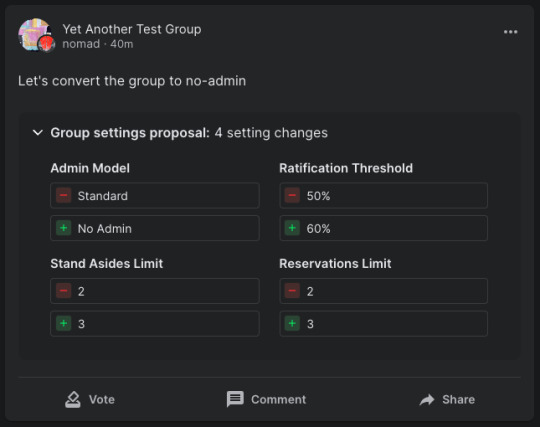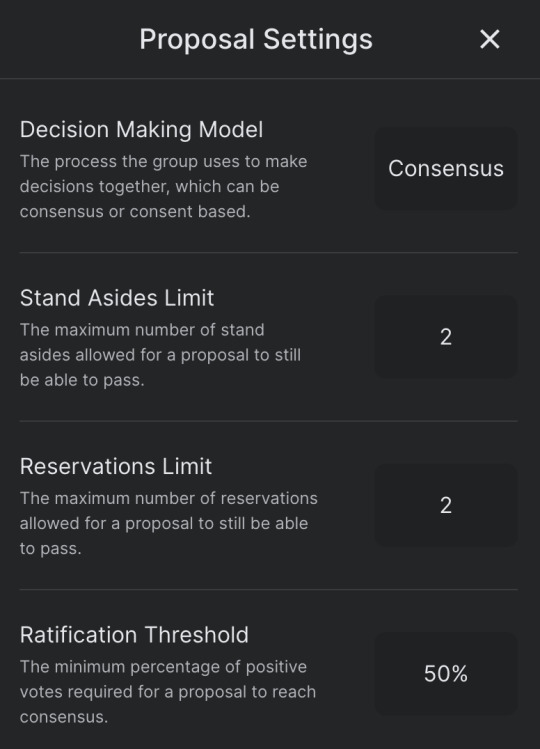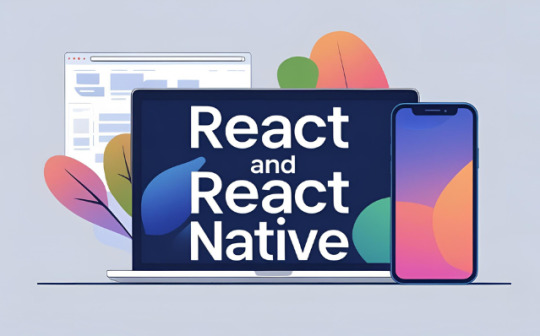#Software testing
Explore tagged Tumblr posts
Text
I'm running low on money, please read
So I've recently moved back into my own place after living on my parents and then my sisters couch for the last 9 months. There's been a fair few things that I've needed to buy, I've had birthdays, food and new bills etc. etc. to the point where I'm left with less than 150 until the 22nd. I'm not e-begging, I do not want your money in return for nothing
Instead I'm asking for you to hire me for something in my wheelhouse to earn the money.
Realistically I shouldn't need more than an extra 100 to last me, which would work out between 2 - 5 of these jobs (depending on their size)
I have experience and/or the knowledge to be able to do the following:
Test a Game/Website/Mobile app/Software/SaaS program 4+ years of experience as a QA Tester/Test Engineer), 2.5 of these as a sole tester on multiple projects
Voice over/voice acting work
Video editing - Podcast, Let's Play, Long-form YouTube Content, Stream Highlights
Writing and Editorial work, such as: - Expansion of notes into full works (blog post, report, essay, etc.) - Review of content drafts for grammar/readability/localisation accuracy/correct referencing styles - Resume/Cover letter creation and/or review - Transcription/Subtitling
Creation of Foley sound effects
I.T Support - Hardware + Software troubleshooting
I know that a lot of these posts are focused more so on art commissions - and my art is not good lmao - but thought it's worth shooting my shot.
Shoot me over a message/ask if there's anything you'd like to hire me for, if you could reblog to signal boost if not I'd be super grateful
#Commissions open#hire me#freelance#qa#game testing#software testing#voice over#voice acting#video editing#writing help#proofreading#resume help#transcription#foley#it support#tumblr jobs#support small creators
7 notes
·
View notes
Text

#work memes#dank memes#funny memes#tumblr memes#best memes#fresh memes#girl memes#QA is chaos#software testing#qa#software tester#tester#testing hell
7 notes
·
View notes
Text
Simplify Decentralized Payments with a Unified Cash Collection Application
In a world where financial accountability is non-negotiable, Atcuality provides tools that ensure your field collections are as reliable as your core banking or ERP systems. Designed for enterprises that operate across multiple regions or teams, our cash collection application empowers agents to accept, log, and report payments using just their mobile devices. With support for QR-based transactions, offline syncing, and instant reconciliation, it bridges the gap between field activities and central operations. Managers can monitor performance in real-time, automate reporting, and minimize fraud risks with tamper-proof digital records. Industries ranging from insurance to public sector utilities trust Atcuality to improve revenue assurance and accelerate their collection cycles. With API integrations, role-based access, and custom dashboards, our application becomes the single source of truth for your field finance workflows.
#ai applications#artificial intelligence#augmented and virtual reality market#augmented reality#website development#emailmarketing#information technology#web design#web development#digital marketing#cash collection application#custom software development#custom software services#custom software solutions#custom software company#custom software design#custom application development#custom app development#application development#applications#iot applications#application security#application services#app development#app developers#app developing company#app design#software development#software testing#software company
5 notes
·
View notes
Text
My software design process is like 90% "what will take the least amount of effort to implement and test" and I think this is morally correct, actually
4 notes
·
View notes
Text
developers trying and reiterating that i've tested wrong when the same test works in lower environments
developers trying and reiterating that i should retest differently instead of actually trying to test it themselves
developers that have never, ever followed steps to reproduce bugs because it's easier to assume it's not a problem, blame me for doing it wrong, or insisting it's a data issue, or ask me to do it again
and when it's a data issue, it's Somebody Else's Problem and it's Not Related to the issue and So We Can Close The Defect? And Also Please Close Your Other Tasks Because We Don't See You As Capable Enough To Do Your Own Housekeeping?
jesus fuck if you spent as much time looking at my goddamned bug reports as you did crawling up my ass about my tasks, we wouldn't be having these conversations!
4 notes
·
View notes
Text


Since our last release, we've introduced several significant updates, with one of the key enhancements being proposals to change group settings. This enables group members to collectively shape the group's overall functionality and tailor it to better suit their needs and preferences as the group evolves over time.
In addition to the ability to propose changes, we've introduced the following group settings:
Decision Making Model - You can now choose from consensus or consent decision-making to determine how decisions are made in the group
Admin Model - Choose from No Admin or Standard to determine how the group is managed. No Admin ensures all changes are made through proposals, while Standard allows for customizable admin roles
Ratification Threshold - Set the minimum amount of positive votes required for a proposal to be ratified under consensus
Voting Time Limit - Set a time limit for how long proposals can be voted on before they're closed or ratified. This can be set with a dropdown or a date picker
Stand Asides and Reservations Limit - Set the acceptable number of stand asides or reservations for a proposal to pass
These updates aim to offer greater customization for groups, while also showcasing how software can empower communities to collectively shape the digital spaces they occupy.
For anyone interested in helping to test the new features, feel free to hit us up on here or Discord.
Join the Praxis Discord - Mastodon - GitHub
#open source#praxis#free software#typescript#nodejs#foss#reactjs#design#graphql#software testing#software#software engineering
49 notes
·
View notes
Text
What is React and React Native? Understanding the Difference

If you're starting out in frontend or mobile development, you've likely heard of both React and React Native. But what exactly are they, and how do they differ?
In this guide, we’ll break down what is React and React Native, their use cases, key differences, and when you should use one over the other.
What is React?
React (also known as React.js or ReactJS) is an open-source JavaScript library developed by Facebook, used to build user interfaces—primarily for single-page applications (SPAs). It's component-based, efficient, and declarative, making it ideal for building dynamic web applications.
Key Features of React:
Component-based architecture: Reusable pieces of UI logic.
Virtual DOM: Improves performance by reducing direct manipulation of the real DOM.
Unidirectional data flow: Predictable state management.
Rich ecosystem: Integrates well with Redux, React Router, and Next.js.
Common Use Cases:
Building dynamic web apps and dashboards
Single-page applications (SPAs)
E-commerce platforms
Admin panels and content management systems
What is React Native?
React Native is also developed by Facebook but is used for building native mobile apps using React principles. It enables developers to write apps using JavaScript and React, but renders UI components using native APIs—meaning it works just like a real native app.
Key Features of React Native:
Cross-platform compatibility: Build apps for both iOS and Android with a single codebase.
Native performance: Uses real mobile components.
Hot reloading: Faster development cycles.
Community support: Large ecosystem of plugins and libraries.
Common Use Cases:
Mobile apps for startups and MVPs
Apps with simple navigation and native look-and-feel
Projects that need rapid deployment across platforms
React vs React Native: Key Differences
Feature
React (React.js)
React Native
Platform
Web browsers
iOS and Android mobile devices
Rendering
HTML via the DOM
Native UI components
Styling
CSS and preprocessors
Uses StyleSheet API (like CSS in JS)
Navigation
React Router
React Navigation or native modules
Ecosystem
Rich support for web tools
Tailored to mobile development
Performance
Optimized for web
Optimized for native mobile experience
When to Use React
Choose React when:
You're building a web application or website
You need SEO optimization (e.g., with Next.js)
Your app depends heavily on web-based libraries or analytics tools
You want precise control over responsive design using HTML and CSS
When to Use React Native
Choose React Native when:
You need a mobile app for both iOS and Android
Your team is familiar with JavaScript and React
You want to reuse logic between mobile and web apps
You’re building an MVP to quickly test product-market fit
Can You Use Both Together?
Yes! You can share business logic, APIs, and sometimes even components (with frameworks like React Native Web) between your React and React Native projects. This is common in companies aiming for a unified development experience across platforms.
Real-World Examples
React is used in web apps like Facebook, Instagram (web), Airbnb, and Netflix.
React Native powers mobile apps like Facebook, Instagram (mobile), Shopify, Discord, and Bloomberg.
Final Thoughts
Understanding what is React and React Native is essential for any frontend or full-stack developer. React is perfect for building fast, scalable web applications, while React Native enables you to build cross-platform mobile apps with a native experience. If you’re deciding between the two, consider your target platform, performance needs, and development resources. In many modern development teams, using both React and React Native allows for a consistent developer experience and code reuse across web and mobile platforms.
2 notes
·
View notes
Text
What are the steps involved in automated functional testing?
Functional Testing Services

Automated functional testing helps ensure that every feature of a software application works exactly as expected. Unlike manual testing, which relies on testers to check each function step by step, automation uses tools and scripts to speed up the process and improve accuracy. Here's a simple breakdown of the main steps involved in automated functional testing.
1. Requirement Analysis:
The first step, or the starting stage, is to know and understand precisely what the application and product should do. Testers review business and functional requirements to identify which features must be tested. This step ensures that the tests cover all critical functions of the application.
2. Test Planning and Tool Selection:
Once the requirements and demands are matched and understood, the next step is to create a well planned testing strategy. While this process consists of selecting the right set of tools and resources for automation (like Selenium, TestComplete, or UFT), defining the major test objectives, identifying the common test data, and deciding which tests are meant to automate based on the features' complexity, frequency, stability.
3. Test Case Design:
Testers and professionals seek to write up the automated test scripts based on the application's functionality in this phase as a common practice. Each script simulates a user action that verifies that the particular feature works correctly and goes well as said. Well-designed scripts ensure that key business processes are tested thoroughly.
4. Environment Setup:
Moving ahead towards the further tests process, it's essential to craft the test setting premises. As it consists of configuring servers, databases networks, and required alignments for better approach and perfection. As the stable setting assures accurate test results will be settled out and procured as per the given concerns.
5. Test Execution & Completition:
While the automated scripts are executed all across the different devices, platforms, or browsers as needed and approached. Tools run the tests, capture results, and log failures or issues. This step is much faster than manual testing and allows repeated testing without extra effort.
6. Result Analysis and Reporting:
After the tests run, the results are reviewed. Any failed tests are analyzed to identify the root cause. Detailed and complete set reports are generated and shared within the knowledge of the development team for fixing the issues quickly and with less time consideration.
7. Maintenance:
As the application evolves, automated scripts need to be updated. Maintenance assures the functional testing suite stays relevant and appropriate and tends to delivers accurate results over time. Companies like Suma Soft, IBM, Cyntexa, and Cignex are experienced in offering reliable automated functional testing services. Their expertise helps businesses maintain software quality while speeding up delivery and reducing testing efforts.
#software testing#it services#technology#software#saas#saas development company#functional testing#manual testing
2 notes
·
View notes
Text
I don’t think I could ever be a person that tests the software cause these code reviews with my peers SUCK

How can you have so many nested loops???
It doesn’t even compile smh
Errors nobody has ever heard of
3 notes
·
View notes
Text

Have you ever wondered how AI can affect every aspect in your life? Yess, including software testing! Auomation, Innovation, and so much more.
Check it out: Read the article.
2 notes
·
View notes
Text
Software Proverb
March testing and April documentation bring forth May publicity.

#proverbs#software development#programmer humor#april#documentation#publicity#may flowers#software testing
2 notes
·
View notes
Text
Types of software testing
As well as the different types of tests there are, there are categories of software testing: manual and automated.
Manual testing
Manual tests are tests that are ran by a human, generally a set of steps is listed with expected results, and someone will run through them confirming if each step has passed or failed.
Manual testing is good for testing things visual elements, giving fast and accurate visual feedback which is closer to how a user would use the software. It's also good for unplanned changes, updating automated test scripts for projects which are changing a lot can be extremely costly.
The human element of Manual testing means that testing can be dynamic, and if an issue is picked up that wasn't necessarily part of the test, it can be raised accordingly. Manual testing is also needed to triage when automation tests have failed, manually running through tests to see the point of failure, if it's a bug or an issue with the automation test, and raising it accordingly.
Automation testing
Automation testing is when tests are written out to be performed by a computer each time they're needed. For example, sending a certain set of inputs to an API and checking it returns what we expect. Automated tests still need to be written by a human, some require a programmer to write each step of the test, some might use frameworks like Gherkin to write tests in human language linked to code in the background.
Automation testing can be a lot quicker than manual testing, which also means more test coverage can be increased. Once the test cases are written out they can then be run anytime they're needed to make sure a software is still behaving as expected, especially after any changes are made to ensure existing functionality wasn't broken unintentionally. Automation testing also allows for tests to be running constantly in the background to pick up any possible faults which can then be triaged.
2 notes
·
View notes
Text
Echa un vistazo a esta entrada… "¡Todos a bordo del tren ágil!".
2 notes
·
View notes
Text
2 notes
·
View notes
Text
Role of Data Engineering Solutions in Modern Business
AcmeMinds, a leading data engineering company, provides comprehensive data engineering services to help businesses transform raw data into actionable insights. Their tailored data engineering solutions include building scalable data pipelines, data cleaning and transformation, real-time analytics, and support for AI and machine learning. AcmeMinds empowers businesses to optimize decision-making, enhance operational efficiency, and drive sustainable growth.
2 notes
·
View notes